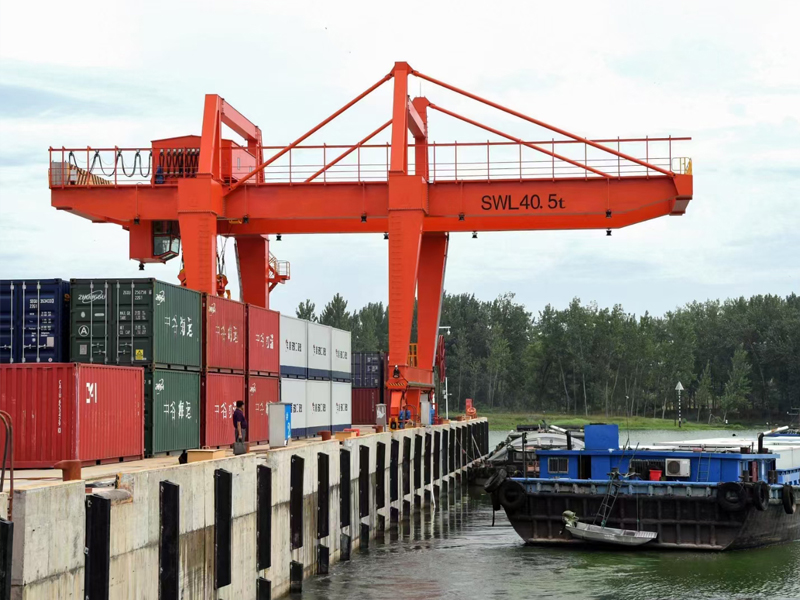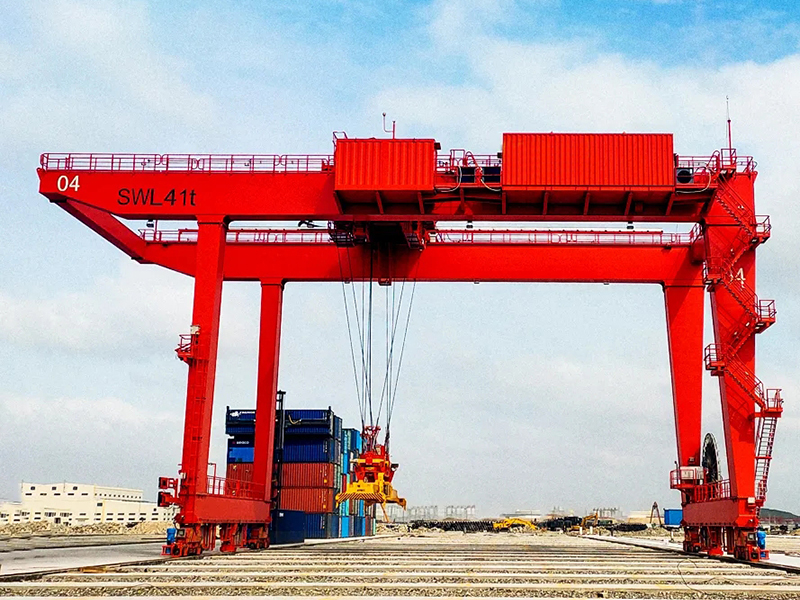The world of shipping and logistics relies heavily on efficient container handling systems, and Rail Mounted Gantry (RMG) cranes have become indispensable in this domain. One of the critical aspects of these towering giants is their power source. RMG shipping container gantry cranes are primarily powered by electrical systems, offering a combination of reliability, precision, and environmental friendliness.

The Heart of the Machine: Electrical Systems
Electrification Methods: RMG shipping container gantry cranes are commonly powered through two main electrification methods: cable reel systems and electrified rail systems. The choice between these methods depends on factors such as the layout of the container yard, operational requirements, and cost considerations.
Cable Reel Systems: In cable reel systems, the crane is connected to a power source via a cable wound on a reel. This allows the crane to move along the rail while maintaining a continuous power supply. Cable reel systems offer flexibility in terms of crane movement but may require additional maintenance to manage cable wear.
Electrified Rail Systems: Electrified rail systems involve providing power through a set of electrified rails embedded in the crane’s path. The crane draws power from these rails as it moves along the designated track. This system offers a constant and reliable power supply but requires careful planning during the installation phase.
Power Supply: RMG cranes are typically powered by electricity from the grid. The power supply can be adapted to suit local conditions, and cranes are designed to meet specific voltage and frequency requirements. The use of electricity as a power source ensures consistent and clean energy, contributing to environmental sustainability.

Key Components of Electrical Systems in RMG Cranes
Drive Systems: The drive systems of RMG cranes are responsible for the movement of the crane along the rail. Electric motors, often with variable frequency drives (VFDs), provide precise control over the crane’s speed and acceleration. VFDs enable smooth and efficient operation, reducing wear and tear on mechanical components.
Hoisting Mechanism: The hoisting mechanism is a critical component responsible for lifting and lowering containers. Electric hoists with powerful motors are employed for this purpose. These motors are designed to handle the heavy loads associated with container lifting, ensuring a reliable and safe lifting operation.
Spreader Control: The spreader, the component that attaches to and lifts containers, is equipped with electrical controls. These controls enable the precise manipulation of the spreader, allowing for accurate container positioning and stacking. Advanced control systems may incorporate automation features for increased efficiency.
Safety Systems: Electrical systems in RMG cranes include safety features to ensure secure operation. Overload protection systems, emergency stop buttons, and anti-collision sensors contribute to the overall safety of the crane. These features are crucial in preventing accidents and minimizing downtime.
Advantages of Electrical Power in RMG Cranes
Precision and Control: Electrical systems provide precise control over the movement and operation of RMG cranes. This precision is essential in container handling operations where accuracy in positioning and stacking is paramount.
Efficiency and Productivity: Electric motors and control systems contribute to the overall efficiency and productivity of RMG cranes. The ability to control acceleration, deceleration, and speed ensures that containers are handled swiftly and with minimal downtime.
Environmental Sustainability: The use of electricity as a power source aligns with the growing emphasis on environmental sustainability. Electric-powered RMG cranes produce fewer emissions compared to alternatives like diesel-powered cranes, contributing to a greener and more sustainable container handling process.
Adaptability: Electrical systems allow for easy integration of automation and remote control technologies. This adaptability enables container terminals to stay at the forefront of technological advancements, improving overall operational efficiency.
Challenges and Considerations
Maintenance Requirements: While electrical systems offer numerous advantages, they also require regular maintenance to ensure optimal performance. Inspections, lubrication, and addressing any electrical issues promptly are essential for the longevity of the crane.
Initial Setup Costs: The initial setup costs of installing electrification systems, whether cable reel or electrified rail, can be significant. However, the long-term benefits in terms of operational efficiency and reduced environmental impact often justify these upfront investments.
Conclusion
In the dynamic world of container handling, Rail Mounted Gantry cranes powered by electrical systems stand out as technological marvels. The precision, efficiency, and environmental sustainability they bring to the table make them integral components of modern shipping and logistics operations. As technology continues to advance, the electrical systems of RMG cranes will likely evolve, further enhancing their capabilities and contributing to the seamless flow of goods around the globe. For more info, click here https://steelmillcranes.com/
